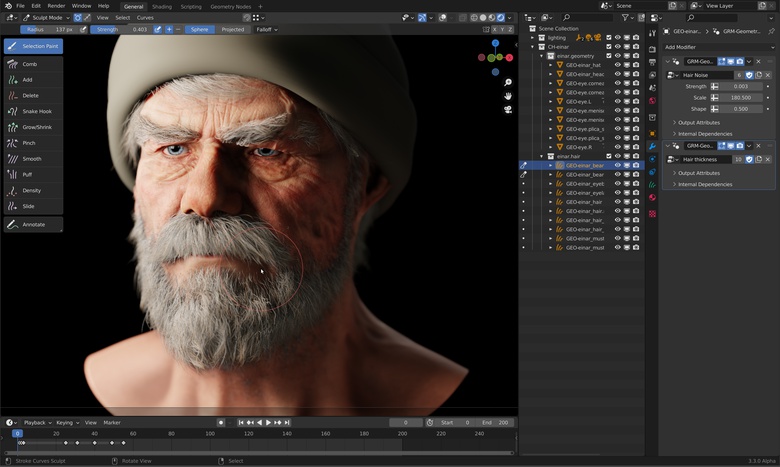Blender is a powerful and versatile 3D modeling software that can help 3D modelers create high-quality 3D models for various applications. However, using Blender effectively can be challenging, especially for beginners. In this article, we’ll share ten tips for 3D modelers using Blender to help them improve their workflow and create better 3D models.

Using Blender for Creating High-Quality 3D Models
- Use reference images: Using reference images can help 3D modelers create accurate and detailed 3D models. Blender allows you to import reference images into your workspace, making it easier to model your 3D models based on real-life references.
- Master the basic shortcuts: Blender has many keyboard shortcuts that can help you work faster and more efficiently. Start by mastering the basic shortcuts, such as the ones for navigating the 3D viewport, selecting objects, and transforming objects.
- Use the modifier stack: Blender’s modifier stack allows you to apply non-destructive modifications to your 3D models. This can help you experiment with different designs without affecting the original geometry.
- Learn to use the subdivision surface modifier: The subdivision surface modifier is a powerful tool in Blender that can help 3D modelers create smooth and detailed 3D models. Learn to use this tool effectively to create high-quality 3D models.
- Use the mirror modifier: The mirror modifier in Blender allows you to create symmetrical 3D models easily. This can save you time and effort in modeling your 3D models.
- Use the proportional editing tool: The proportional editing tool in Blender allows you to modify the geometry of your 3D models while preserving the overall shape. This tool can help you create more organic and natural-looking 3D models.
- Use the loop cut tool: The loop cut tool in Blender allows you to add loops to your 3D models, which can help you create more complex and detailed 3D models. This tool can be especially useful for creating 3D models with hard edges.
- Learn to use the UV mapping tools: UV mapping is the process of creating a 2D representation of a 3D model’s surface. Blender has many UV mapping tools that can help 3D modelers create accurate and detailed UV maps for their 3D models.
- Use the sculpting tools: Blender’s sculpting tools allow 3D modelers to create organic and natural-looking 3D models. Learn to use these tools effectively to add details and textures to your 3D models.
- Practice, practice, practice: The key to becoming a proficient 3D modeler using Blender is to practice regularly. Experiment with different tools and techniques, and challenge yourself to create complex and detailed 3D models.
Conclusion:
Blender is a powerful and versatile 3D modeling software that can help 3D modelers create high-quality 3D models for various applications. By using these ten tips, 3D modelers can improve their workflow and create better 3D models using Blender. Remember to practice regularly and experiment with different tools and techniques to continue improving your skills as a 3D modeler.
